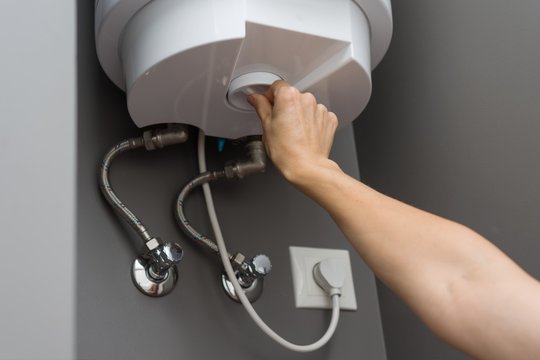Straightforward Methods to Maintain Your Home's Hot Water System Effectively
Straightforward Methods to Maintain Your Home's Hot Water System Effectively
Blog Article
Were you trying to locate critical info on Water Heater Maintenance Tips You Can't Afford to Forget?

Warm water is vital for everyday comfort, whether it's for a revitalizing shower or washing dishes. To guarantee your warm water system runs successfully and lasts longer, regular upkeep is crucial. This short article gives functional suggestions and understandings on exactly how to maintain your home's warm water system to prevent disruptions and pricey repair services.
Intro
Maintaining your home's warm water system may seem overwhelming, yet with a couple of easy actions, you can guarantee it operates efficiently for many years to come. This overview covers everything from recognizing your warm water system to do it yourself maintenance tips and recognizing when to hire expert help.
Value of Maintaining Your Warm Water System
Regular upkeep not just extends the life-span of your warm water system however additionally ensures it runs efficiently. Ignoring maintenance can lead to reduced efficiency, greater power expenses, and also premature failing of the system.
Signs Your Warm Water System Demands Maintenance
Recognizing when your hot water system requires attention can avoid significant issues. Keep an eye out for indicators such as inconsistent water temperature level, odd noises from the heating unit, or corroded water.
Understanding Your Warm Water System
Prior to diving into maintenance jobs, it's handy to understand the fundamental parts of your hot water system. Normally, this consists of the water heater itself, pipes, anode poles, and temperature level controls.
Monthly Maintenance Tasks
Normal monthly checks can help capture small issues before they intensify.
Purging the Water Heater
Flushing your hot water heater gets rid of sediment buildup, enhancing performance and prolonging its life.
Checking and Replacing Anode Rods
Anode rods stop corrosion inside the tank. Examining and changing them when broken is crucial.
Evaluating and Adjusting Temperature Settings
Changing the temperature level setups ensures optimal performance and safety.
DIY Tips for Maintenance
You can perform numerous upkeep jobs on your own to maintain your hot water system in top problem.
Looking for Leakages
Regularly examine pipes and links for leakages, as these can lead to water damage and higher bills.
Testing Pressure Relief Valves
Evaluating the pressure relief valve ensures it works properly and avoids extreme pressure accumulation.
Protecting Pipes
Protecting hot water pipes reduces heat loss and can conserve power.
When to Call a Specialist
While do it yourself upkeep is valuable, some concerns call for specialist know-how.
Complicated Problems Requiring Professional Help
Instances consist of significant leakages, electrical problems, or if your water heater is consistently underperforming.
Regular Specialist Upkeep Perks
Expert maintenance can include detailed assessments, tune-ups, and ensuring compliance with security requirements.
Conclusion
Regular upkeep of your home's warm water system is essential for performance, long life, and expense savings. By following these pointers and understanding when to look for specialist assistance, you can guarantee a trusted supply of warm water without unforeseen disruptions.
How to Maintain an Instant Hot Water Heater
Before tinkering with your hot water heater, make sure that it’s not powered on. You also have to turn off the main circuit breaker and shut off the main gas line to prevent accidents. Also turn off the water valves connected to your unit to prevent water from flowing into and out of the appliance. 2. When you’re done, you have to detach the purge valves’ caps. These look like the letter “T†and are situated on either side of the water valves. Doing so will release any pressure that has accumulated inside the valves while at the same time avoid hot water from shooting out and burning your skin. 3. When the purge valves’ caps are removed, you have to connect your hosing lines to the valves. Your unit should have come with three hoses but if it didn’t, you can purchase these things from any hardware or home repair shops. You can also get them from retail stores that sell water heating systems. Read the user’s manual and follow it to complete this task properly. When the hosing lines are connected, open the purge port’s valves. 4. You should never use harsh chemical cleaners or solutions when cleaning your unit. Make use of white vinegar instead. It should be undiluted and you’ll probably use about 2 gallons. 5. Now flush your water heater. This task should probably take about 40 minutes. We can’t give you specific directions for this because the procedure is carried out depending on the type, model and brand of your heater. With that being said, refer to the user’s manual. 6. When you’re done draining the unit, you have to turn off the purge port valves again. Remove the hosing lines that you earlier installed on each of the water valves. Put the valve caps (purge port) back in their respective places and be very careful so as not to damage the rubber discs that are found inside these caps. 7. Now that everything’s back in place, check your user’s manual again to find out how to reactivate your water heating system. 8. Once it is working, turn one of your hot water faucets on just to let air pass through the heater’s water supply pipes. Leave the tap on until water flows smoothly out of it. https://www.orrplumbing.com/blog/2014/september/how-to-maintain-an-instant-hot-water-heater/

I found that piece of writing about What Kind of Maintenance Do Water Heaters Need? when doing a search on the internet. Appreciated our blog posting? Please quickly share it. Let somebody else check it out. Thanks a lot for being here. Don't hesitate to visit our site back soon.
Information Report this page